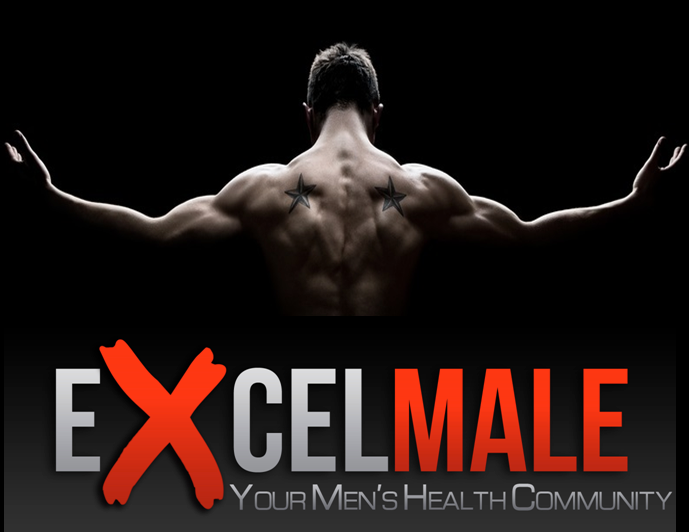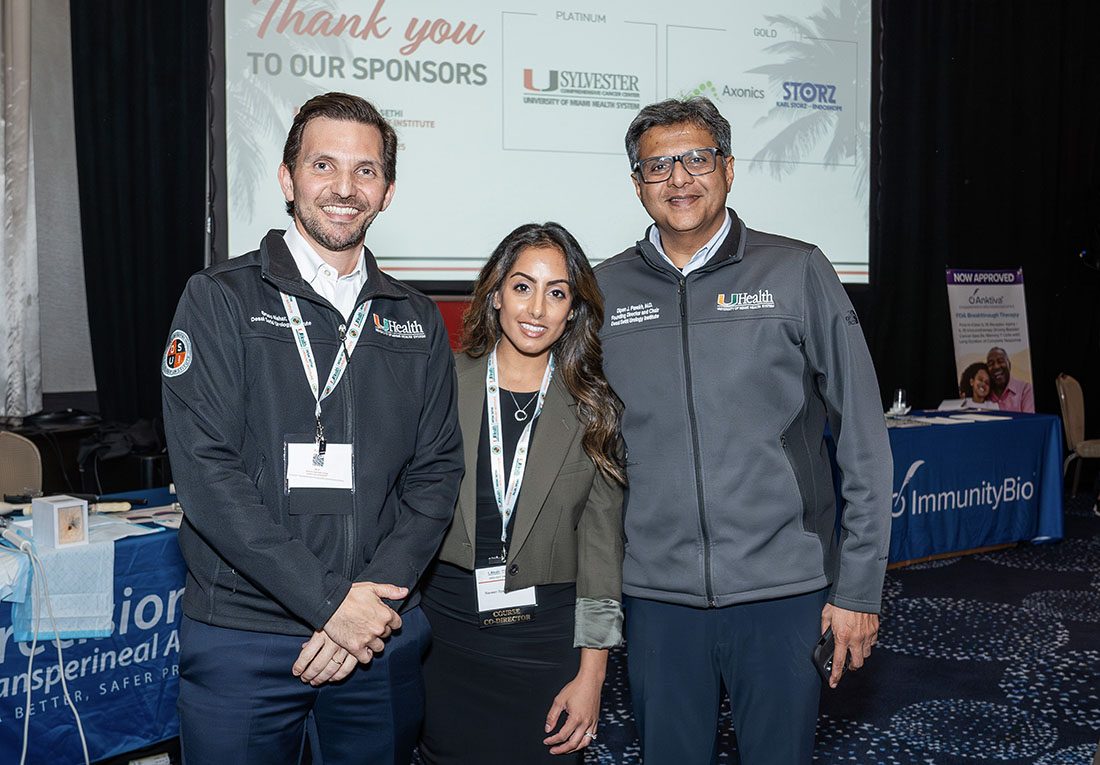This is gold really enjoyed this one!
Worthy of a sticky!
Professor Dimitrius Goulis delivers an expert overview of when and how to induce spermatogenesis in men with hypogonadism
Male reproductive health encompasses two critical functions: endocrine function (testosterone production) and exocrine function (sperm production). When these systems fail, clinicians face the challenge of restoring fertility through spermatogenesis induction. Professor Dimitrius Goulis, a leading expert in reproductive endocrinology from Aristotle University of Thessalonica, recently provided comprehensive insights into this complex therapeutic area.
The Two Faces of Testicular Dysfunction
Testicular function can fail in two distinct ways. The first is endocrine failure, characterized by low serum testosterone levels—a condition known as male hypogonadism. The second is exocrine failure, which manifests as poor semen quality and leads to male infertility. These conditions are closely interconnected: endocrine failure will eventually compromise spermatogenesis, though the reverse is not necessarily true.
Classification of Hypogonadism
Male hypogonadism falls into two primary categories:
Hypergonadotropic Hypogonadism occurs when the testes themselves fail to function properly. Klinefelter syndrome serves as the archetypal example, though numerous other congenital and acquired causes exist. Unfortunately, treatment options for this condition remain limited.
Hypogonadotropic Hypogonadism results from failure at the hypothalamic or pituitary level. Kallmann syndrome represents the prototype disease, but nearly 60 genes have been identified that explain approximately 50% of congenital cases. Importantly, not all cases present with identical clinical pictures—some are reversible, making genotype analysis crucial for treatment planning.
A third category, functional hypogonadism, involves failure at both hypothalamic and pituitary levels and is associated with advanced age and comorbidities such as obesity.
Understanding the hormonal cascade is essential for effective treatment. The hypothalamus produces GnRH, which stimulates the pituitary to release LH and FSH. These gonadotropins then act on the testes to produce testosterone (endocrine function) and sperm (exocrine function).
Key Physiological Insights
Several important mechanisms enable therapeutic intervention:
Pulsatile GnRH Therapy
The most physiological approach involves administering what's actually missing—GnRH delivered in a pulsatile manner. Treatment typically involves 25 nanograms per kilogram given as bolus injections every two hours through a pump. The dose is adjusted to achieve mid-normal serum testosterone levels.
While this represents the most physiological treatment, it requires significant clinical expertise and specialized equipment that may not be widely available.
Gonadotropin Therapy: Three Strategic Approaches
1. HCG Monotherapy
2. Combined Gonadotropin Therapy
3. Sequential Gonadotropin Therapy
Unlike female ovulation induction, which achieves nearly 100% success in hypogonadotropic hypogonadism, male spermatogenesis induction succeeds in only 75-80% of cases. This difference relates to the critical importance of developmental timing in male reproductive physiology.
The Mini-Puberty Connection
Normal male development includes three testosterone peaks: during fetal life (due to placental hCG), during mini-puberty (2-6 months of age), and during normal puberty. Men with congenital hypogonadotropic hypogonadism miss the mini-puberty phase, which appears detrimental to future spermatogenesis induction success.
Four Key Negative Predictors
Research has identified four well-recognized negative predictors for fertility outcomes in congenital hypogonadotropic hypogonadism:
Patience is essential when inducing spermatogenesis. The most severe cases may require at least one year, sometimes up to two years, to reach maximal testicular volume and sperm count. However, pregnancy can sometimes be achieved even with very low sperm counts, considering that treatment begins from azoospermia (zero sperm count).
Despite significant advances, several gaps remain in clinical practice:
Research Needs
Clinical Practice Gaps
Spermatogenesis induction represents a complex but rewarding area of reproductive medicine. Success depends on accurate diagnosis, appropriate patient selection, and choosing the right therapeutic approach based on individual patient characteristics. While not all men will achieve fertility through these interventions, the 75-80% success rate offers hope for many couples facing male factor infertility.
The field continues to evolve, with ongoing research aimed at improving treatment protocols and identifying better predictive factors. For clinicians treating these patients, understanding both the physiological principles and practical limitations remains essential for optimal patient care and realistic counseling about treatment outcomes.
As Professor Goulis emphasized, genetic counseling is recommended for these patients, not only to predict treatment success but also to understand what genetic factors may be passed to future generations. This comprehensive approach ensures that couples receive both the best possible treatment and appropriate guidance for family planning decisions.

Worthy of a sticky!
Spermatogenesis Induction: A Comprehensive Guide to Male Fertility Treatment
Professor Dimitrius Goulis delivers an expert overview of when and how to induce spermatogenesis in men with hypogonadism
Introduction
Male reproductive health encompasses two critical functions: endocrine function (testosterone production) and exocrine function (sperm production). When these systems fail, clinicians face the challenge of restoring fertility through spermatogenesis induction. Professor Dimitrius Goulis, a leading expert in reproductive endocrinology from Aristotle University of Thessalonica, recently provided comprehensive insights into this complex therapeutic area.
Understanding Male Hypogonadism and Its Impact on Fertility
The Two Faces of Testicular Dysfunction
Testicular function can fail in two distinct ways. The first is endocrine failure, characterized by low serum testosterone levels—a condition known as male hypogonadism. The second is exocrine failure, which manifests as poor semen quality and leads to male infertility. These conditions are closely interconnected: endocrine failure will eventually compromise spermatogenesis, though the reverse is not necessarily true.
Classification of Hypogonadism
Male hypogonadism falls into two primary categories:
Hypergonadotropic Hypogonadism occurs when the testes themselves fail to function properly. Klinefelter syndrome serves as the archetypal example, though numerous other congenital and acquired causes exist. Unfortunately, treatment options for this condition remain limited.
Hypogonadotropic Hypogonadism results from failure at the hypothalamic or pituitary level. Kallmann syndrome represents the prototype disease, but nearly 60 genes have been identified that explain approximately 50% of congenital cases. Importantly, not all cases present with identical clinical pictures—some are reversible, making genotype analysis crucial for treatment planning.
A third category, functional hypogonadism, involves failure at both hypothalamic and pituitary levels and is associated with advanced age and comorbidities such as obesity.
The Physiology Behind Spermatogenesis Induction
Understanding the hormonal cascade is essential for effective treatment. The hypothalamus produces GnRH, which stimulates the pituitary to release LH and FSH. These gonadotropins then act on the testes to produce testosterone (endocrine function) and sperm (exocrine function).
Key Physiological Insights
Several important mechanisms enable therapeutic intervention:
- Alternative testosterone stimulation: Beyond endogenous LH, testosterone production can be stimulated by human chorionic gonadotropin (hCG), recombinant LH, and human menopausal gonadotropins
- FSH supplementation: Recombinant FSH and long-acting FSH formulations can support endogenous FSH function
- Additional testicular products: Leydig cells produce insulin-like factor 3 (important for testicular descent), while Sertoli cells produce anti-Müllerian hormone and inhibin B (markers of healthy Sertoli cell function)
Treatment Approaches: From Physiological to Practical
Pulsatile GnRH Therapy
The most physiological approach involves administering what's actually missing—GnRH delivered in a pulsatile manner. Treatment typically involves 25 nanograms per kilogram given as bolus injections every two hours through a pump. The dose is adjusted to achieve mid-normal serum testosterone levels.
While this represents the most physiological treatment, it requires significant clinical expertise and specialized equipment that may not be widely available.
Gonadotropin Therapy: Three Strategic Approaches
1. HCG Monotherapy
- Dosing: 500-1500 IU subcutaneously, three times weekly or every other day
- Target: Adjust dose based on trough testosterone levels to achieve mid-normal range
- Best suited for: Milder cases with testicular volume greater than 6 ml
- Limitation: Suboptimal for absent puberty cases
2. Combined Gonadotropin Therapy
- HCG: Same dosing as monotherapy
- FSH: 75-300 IU, three times weekly or every other day
- Target: Testosterone in mid-normal range, serum FSH around 5 IU/L
- Effectiveness: Superior to HCG monotherapy, comparable to pulsatile GnRH
3. Sequential Gonadotropin Therapy
- Phase 1: FSH pre-treatment (75-100 IU, three times weekly) for 2-4 months
- Phase 2: Combined HCG and FSH therapy
- Indication: Most severe cases
- Evidence: Appears most effective, though data remain sparse
Success Rates and Predictive Factors
Unlike female ovulation induction, which achieves nearly 100% success in hypogonadotropic hypogonadism, male spermatogenesis induction succeeds in only 75-80% of cases. This difference relates to the critical importance of developmental timing in male reproductive physiology.
The Mini-Puberty Connection
Normal male development includes three testosterone peaks: during fetal life (due to placental hCG), during mini-puberty (2-6 months of age), and during normal puberty. Men with congenital hypogonadotropic hypogonadism miss the mini-puberty phase, which appears detrimental to future spermatogenesis induction success.
Four Key Negative Predictors
Research has identified four well-recognized negative predictors for fertility outcomes in congenital hypogonadotropic hypogonadism:
- Absent spontaneous puberty
- Testicular volume less than 4 ml
- Cryptorchidism, especially bilateral
- Low serum inhibin B levels
- Specific genotypes (such as ANOS1 or KAL1 mutations)
Treatment Timeline and Realistic Expectations
Patience is essential when inducing spermatogenesis. The most severe cases may require at least one year, sometimes up to two years, to reach maximal testicular volume and sperm count. However, pregnancy can sometimes be achieved even with very low sperm counts, considering that treatment begins from azoospermia (zero sperm count).
Current Challenges and Future Directions
Despite significant advances, several gaps remain in clinical practice:
Research Needs
- Evidence-based clinical guidelines
- Direct comparisons between treatment approaches
- Multicenter studies for rare conditions
- Longitudinal studies on adolescent populations
- Better genotype-phenotype correlation data
Clinical Practice Gaps
- Limited availability of pulsatile GnRH therapy
- Need for patient-reported outcome measures beyond hormonal normalization
- Requirement for specialized clinical expertise
Conclusion
Spermatogenesis induction represents a complex but rewarding area of reproductive medicine. Success depends on accurate diagnosis, appropriate patient selection, and choosing the right therapeutic approach based on individual patient characteristics. While not all men will achieve fertility through these interventions, the 75-80% success rate offers hope for many couples facing male factor infertility.
The field continues to evolve, with ongoing research aimed at improving treatment protocols and identifying better predictive factors. For clinicians treating these patients, understanding both the physiological principles and practical limitations remains essential for optimal patient care and realistic counseling about treatment outcomes.
As Professor Goulis emphasized, genetic counseling is recommended for these patients, not only to predict treatment success but also to understand what genetic factors may be passed to future generations. This comprehensive approach ensures that couples receive both the best possible treatment and appropriate guidance for family planning decisions.
Last edited by a moderator:













